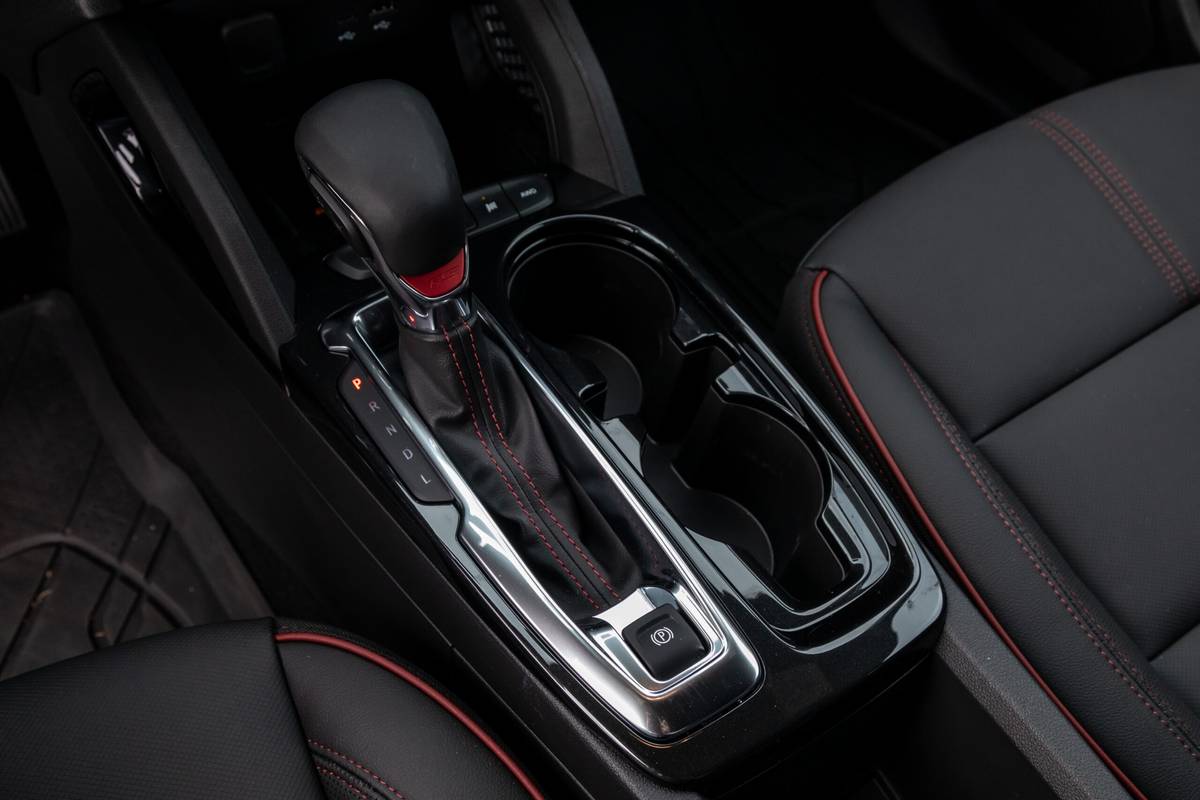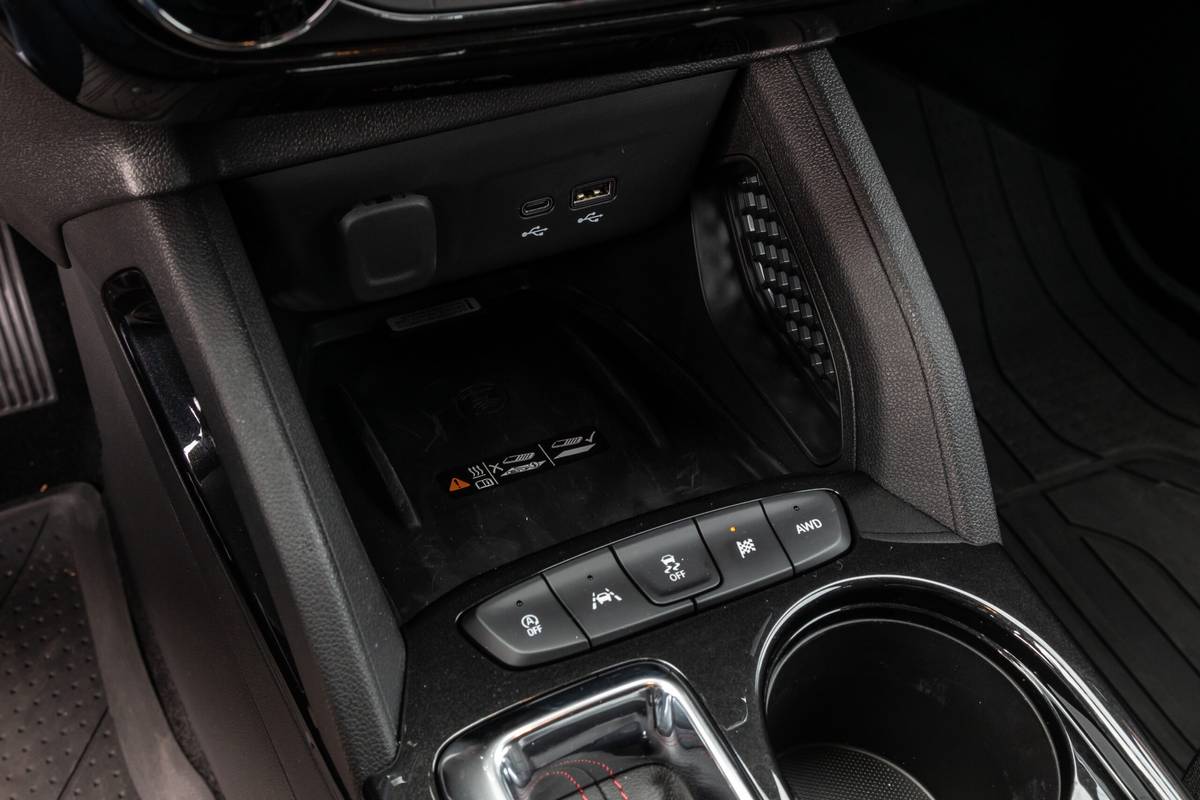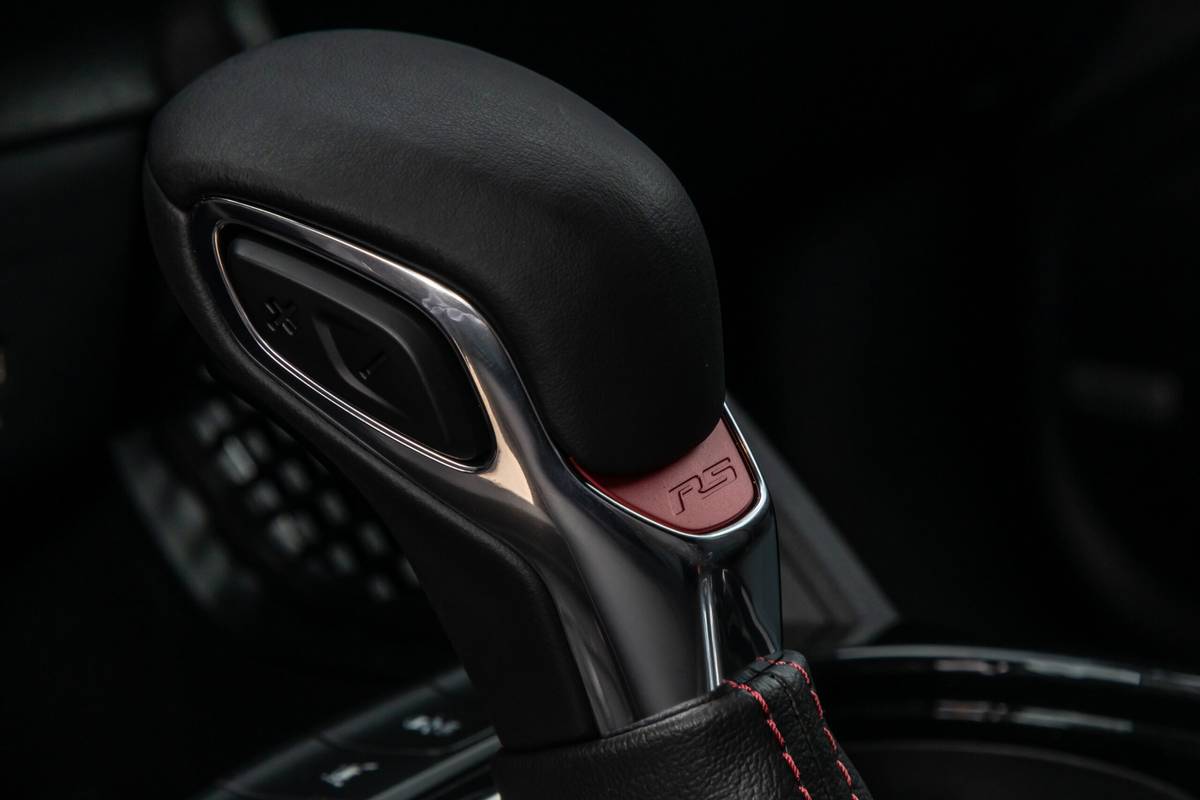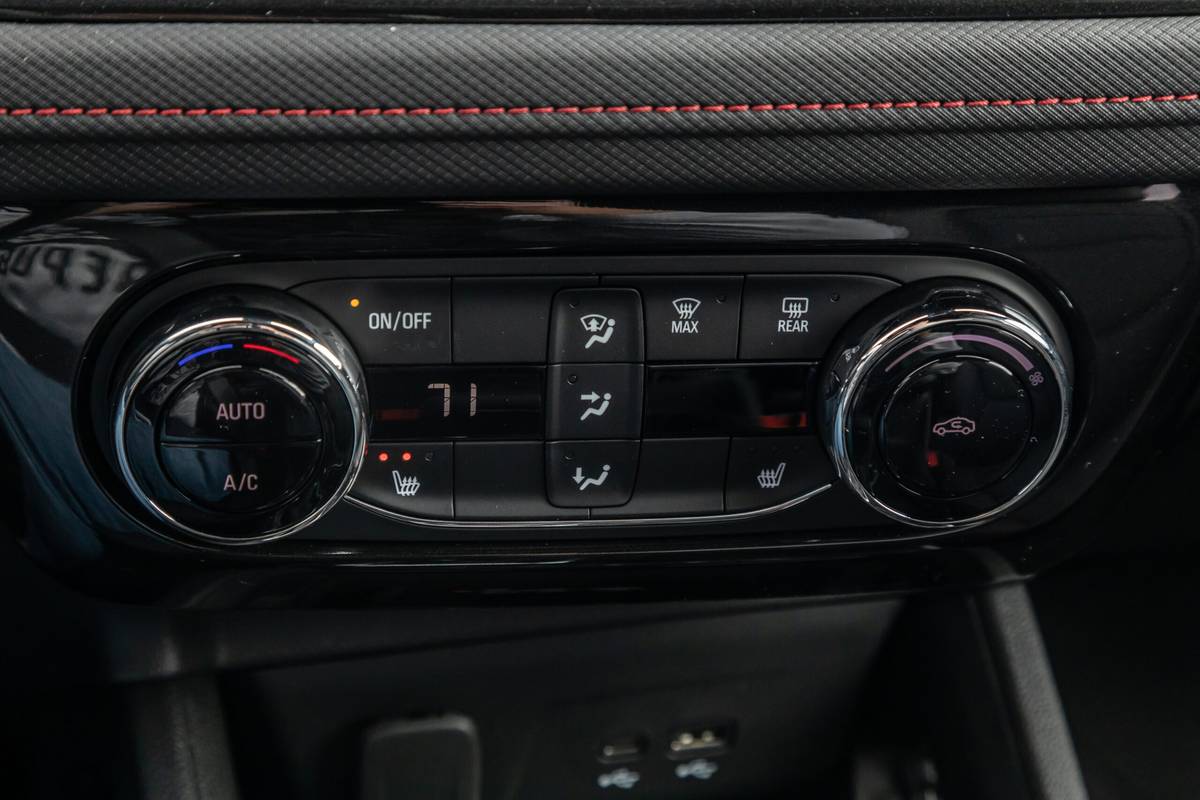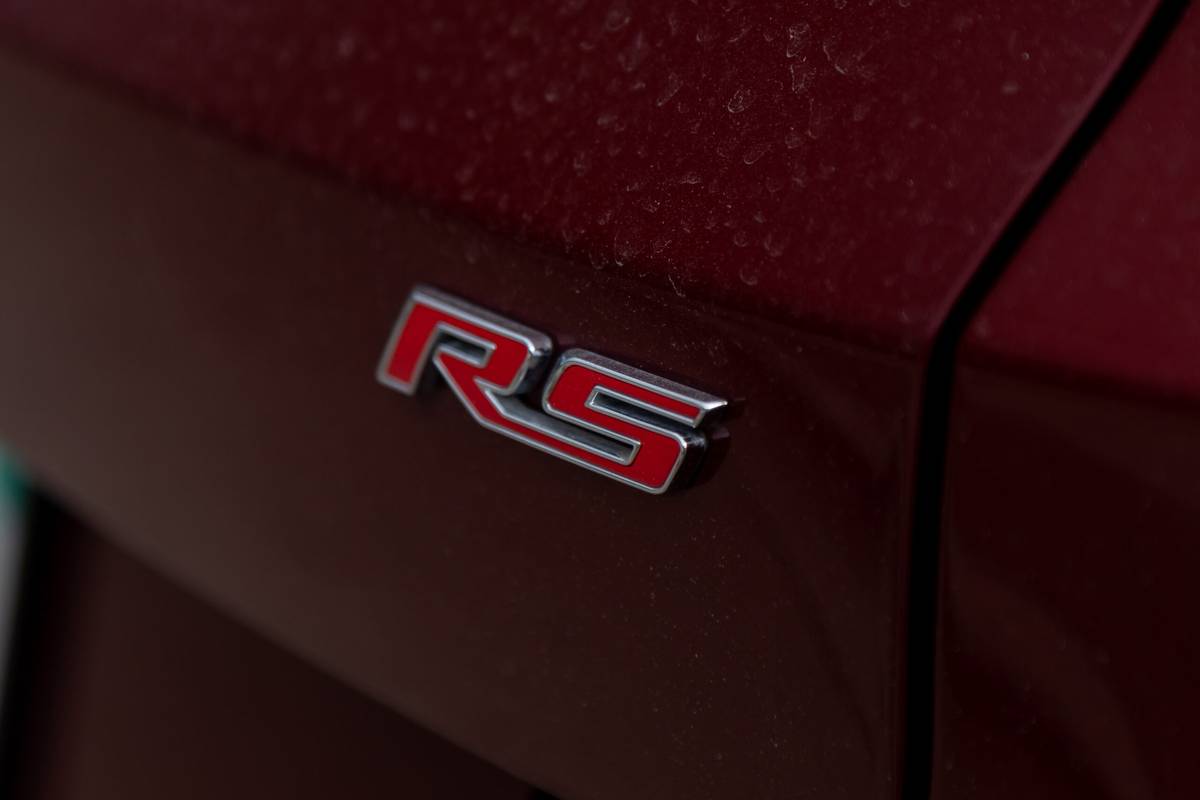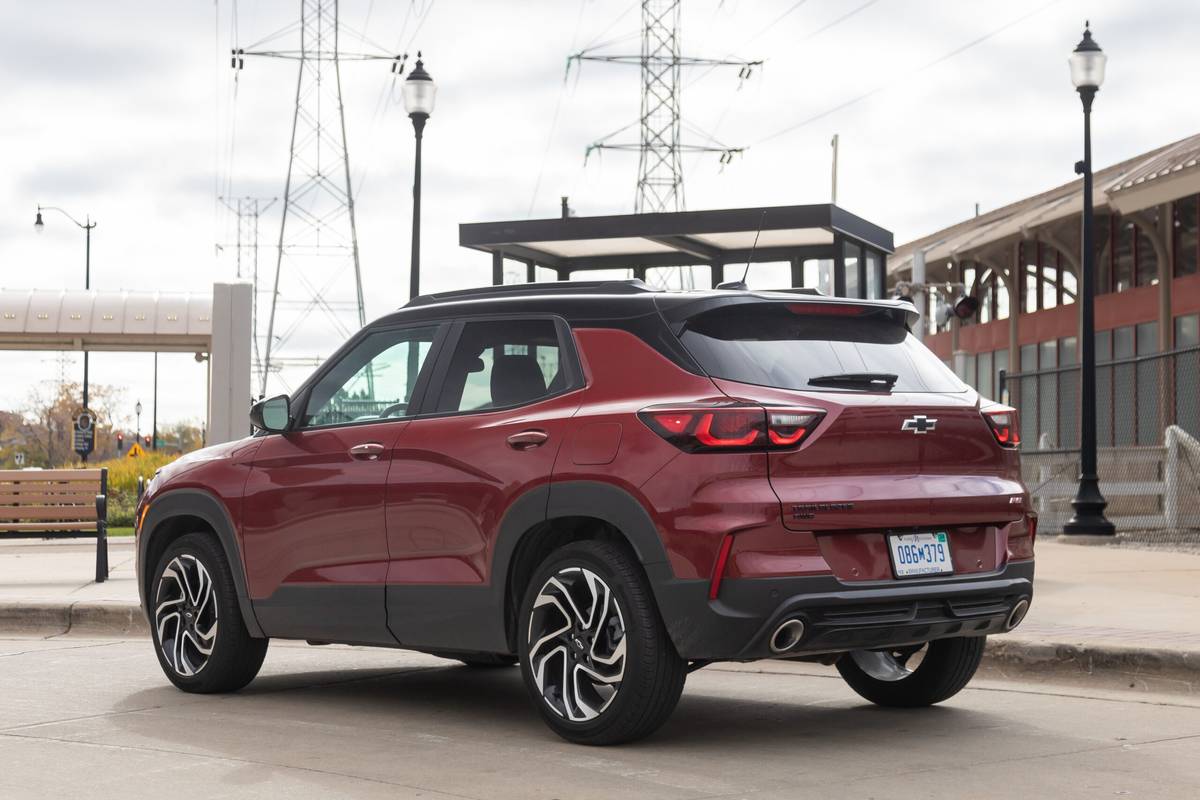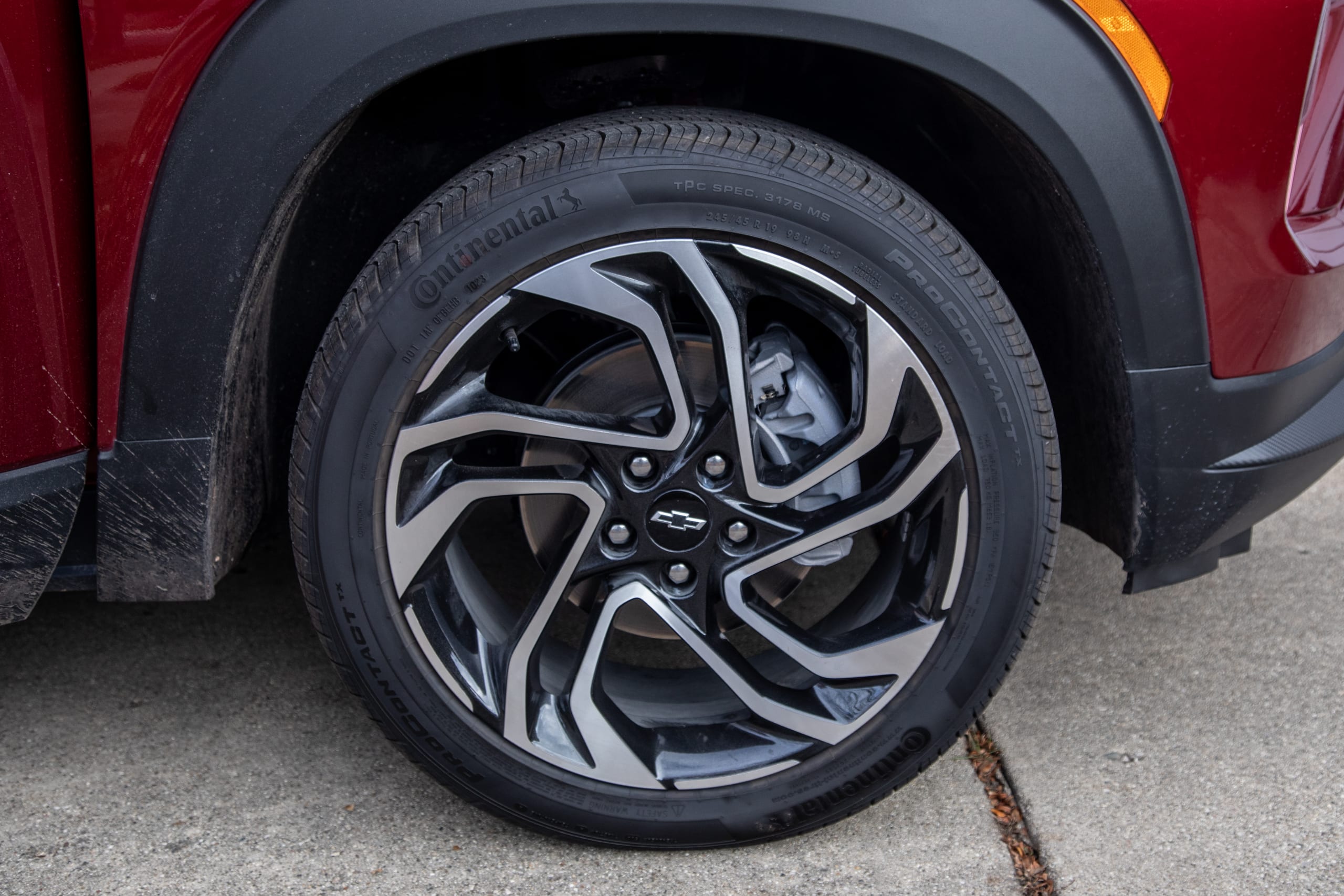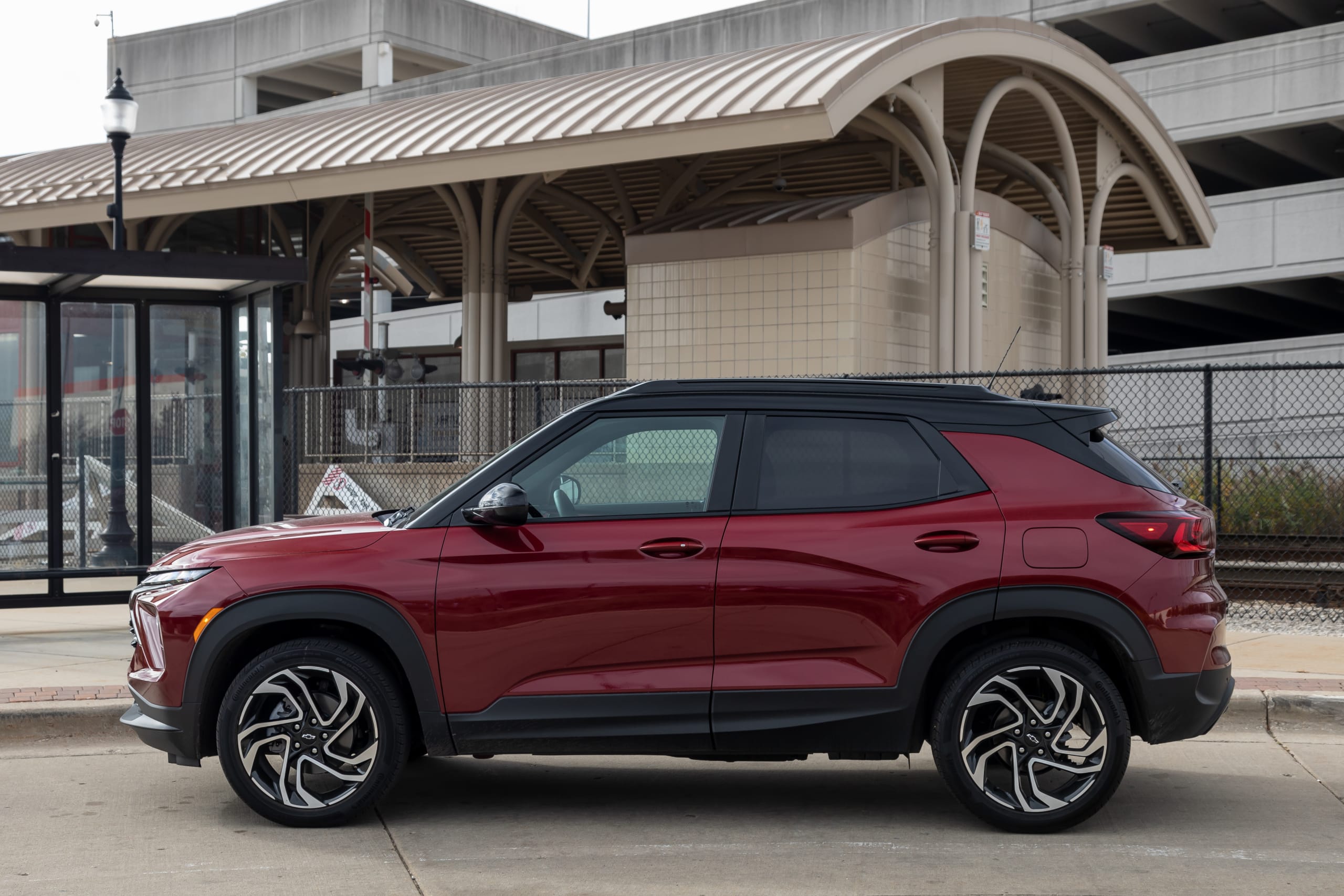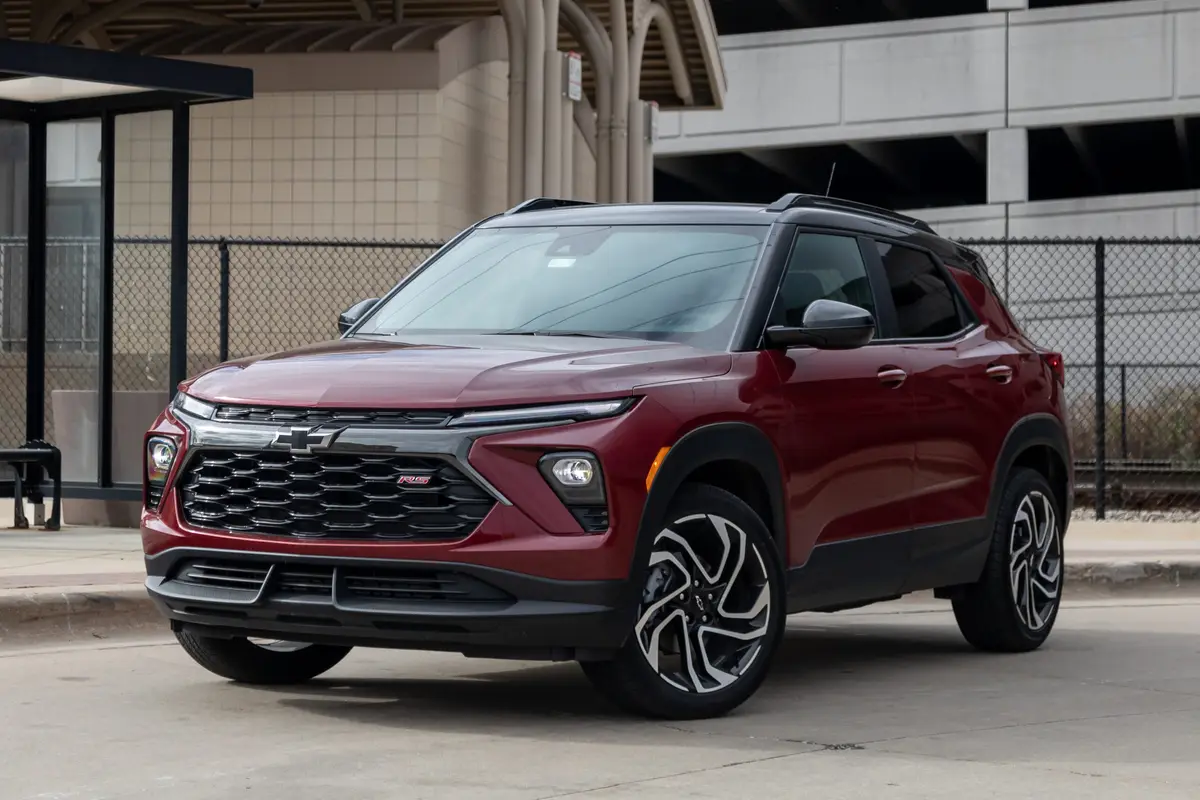
The verdict: The refreshed 2024 Chevrolet Trailblazer is a competent subcompact SUV with useful and advanced technology, but the best version of it commands a hefty price.
Versus the competition: Not only are competitors from other automakers nearly or just as good as — if not better than — the Trailblazer, Chevrolet itself renders the Trailblazer nearly pointless with its well-nigh identical and more affordable Trax SUV.
The Trailblazer is one of two subcompact SUVs from Chevrolet, and soon after it debuted as a 2021 model, we pitted an RS trim level against a Mazda CX-30, Subaru Crosstrek and then-new Kia Seltos in a four-vehicle comparison test. Despite its newness, the Chevy finished in last place.
We recently revisited the subcompact SUV class, doing a six-vehicle comparison test in early 2023, but without the Trailblazer. Instead, we invited the all-new 2024 Chevrolet Trax, which managed a respectable third-place finish overall and a tie for first in our value scoring.
Related: 2023 Affordable SUV Challenge: Which SUV Is the Best Value for the Money?
Now, the Trailblazer is updated for the 2024 model year, with revised front styling, improved interior tech and a few other tweaks. For this review, we tested a 2024 Trailblazer RS with all-wheel drive and the optional, more powerful 155-horsepower, turbocharged 1.3-liter three-cylinder engine. With almost $4,700 in options, our test vehicle had a sticker price of $34,670 (including destination). So where does the 2024 Trailblazer fit into the subcompact SUV class three years on — especially now with a Trax sibling that’s both affordable and competitive?
High-Tech, Low-Rent
Let’s start inside the Trailblazer, which is an interesting mix of good and not so good. Starting with the good, the Trailblazer has a traditional, upright SUV shape that gives occupants a decent amount of interior space considering its overall size. The Trailblazer has 13.5 cubic feet of cargo space by Cars.com’s cargo measurements, which trails a number of its competitors. It does have a standard fold-flat front-passenger seat, which adds utility and makes it easier to transport longer items inside the SUV — just not passengers, too. There are also a lot of bins, cubbies and spaces throughout the cabin that make small-item storage easy. The Trailblazer also offers an available hands-free power liftgate, which is an uncommon but very welcome feature in this class.
Related Video:
We cannot generate a video preview.
The interior’s standout feature, however, is the newly standard 11-inch touchscreen infotainment display. The Trailblazer was already a class leader for interior tech, and this new and larger screen keeps Chevrolet at the front of the pack. It includes standard wireless Apple CarPlay and Android Auto connectivity, which is an increasingly common feature. The display itself looks great and is intuitive to use; it looks and feels like something in a more expensive vehicle. Unlike some other GM infotainment systems, it doesn’t use Google Built-In technology. While that may help it avoid the connectivity issues we’ve encountered when using other Google Built-In-based systems, it also means owners won’t get any of that system’s useful features.
Unfortunately, for all the attention paid to technology in the Trailblazer, it seems very little care went into its interior materials. They’re stylishly shaped, but the materials themselves feel cheap and low-rent — and quality dips even further in the backseat. It looks and feels very similar to the interior of the Trax Activ we drove for our comparison test, which wouldn’t be concerning if this Trailblazer weren’t roughly $8,000 more expensive than that car. Of the two cockpits, I prefer the Trax, which has a more driver-oriented screen position. The flat-bottom steering wheel in the Trailblazer RS is a nice touch, though, as are the red accents on the dashboard and seats. The Trailblazer’s interior isn’t bad, it’s just disappointing. In a lower-priced vehicle, it might seem pretty nice, but with an as-tested price of more than $34,000 — higher than a loaded Kia Seltos SX Turbo, which features a near-premium interior — the Trailblazer RS disappoints.
Driving Is Secondary
In most subcompact SUVs, the driving experience is understandably secondary. Driving refinement and performance cost money, making an affordable SUV less, well, affordable. The Trailblazer is no exception to this. I drove one with the optional, more powerful turbocharged 1.3-liter three-cylinder engine (up a whopping tenth of a liter from the base turbo 1.2-liter three-cylinder). It makes 155 hp and 174 pounds-feet of torque, but it doesn’t make the Trailblazer RS feel much quicker or sportier than the Trax, which gets 137 hp and 162 pounds-feet of torque from its turbo 1.2-liter three-cylinder. The Trailblazer is peppy around town but runs out of power on the highway, and its available nine-speed automatic transmission has a hard time finding the right gear; it can take a significant amount of time to kick down when you want more power. The powertrain is also noisy and unrefined.
The addition of AWD (something the front-drive Trax doesn’t offer) doesn’t improve the Trailblazer’s handling or driving characteristics in any meaningful way, either. The steering is responsive enough for something in its class, but in higher-speed corners, like some highway on- and off-ramps, the Trailblazer doesn’t have a lot of grip to work with, and it feels like it has a high center of gravity. What nimbleness it does have is due more to its size than its handling.
For 2024, the Trailblazer RS gets larger 19-inch wheels wrapped in lower-profile tires. To my surprise, this setup didn’t seem to negatively affect ride quality, though the Trailblazer RS definitely rides a bit on the firm side. Again, this is supposed to be an affordable SUV, and suspension refinement costs money. The Trailblazer’s short wheelbase doesn’t help matters, as each set of wheels hits bumps in quick succession. The ride also feels busy.
AWD versions of the Trailblazer earned an EPA rating of 27 mpg combined, which is disappointing given there’s no worthwhile performance benefit. The turbocharged Kia Seltos, which won our most recent subcompact SUV comparison test, has slightly worse fuel economy ratings (26 mpg combined with AWD) but is far more engaging to drive. The 2024 Subaru Crosstrek is rated 29 mpg combined with its base engine and has a more comfortable ride. If fuel efficiency is your top priority, the Toyota Corolla Cross Hybrid (42 mpg combined) is a good pick.
More From Cars.com:
- 2024 Chevrolet Trailblazer: New Faces, New Prices
- Here Are the 10 Cheapest New SUVs You Can Buy Right Now
- 2024 Chevrolet Trax Quick Spin: Fully Loaded and Only $26,000?!
- Research the 2024 Chevrolet Trailblazer
- Shop for a 2024 Chevrolet Trailblazer
Value Isn’t There
The problem with the Trailblazer RS isn’t that it’s especially bad at anything, it’s that it’s very expensive for what it is. It’s pricier than the loaded Kia Seltos SX Turbo that won our comparison test (and tied for first in value), and for my money, the Seltos is a better all-around vehicle. You know the saying, “A jack of all trades is a master of none, but oftentimes better than a master of one”? Well, the Trailblazer has competitors that are also more fuel-efficient and comfortable than it is.
On top of that, the Trax exists. While it doesn’t come with AWD, it’s as good as the Trailblazer in most respects, if a little less roomy and utilitarian. A loaded Trax is also thousands of dollars cheaper than a loaded Trailblazer; unless you need AWD, the Trax is just a better choice. If you do need AWD, there are still probably better choices than the Trailblazer. Have you seen what a Subaru Crosstrek can do off-road?
The Trailblazer RS is a competent small SUV with excellent technology, but it’s undone by its price and in-house competition. If you can get one at a discount, it’s worth your consideration, but at full price, there are better options.
Cars.com’s Editorial department is your source for automotive news and reviews. In line with Cars.com’s long-standing ethics policy, editors and reviewers don’t accept gifts or free trips from automakers. The Editorial department is independent of Cars.com’s advertising, sales and sponsored content departments.
































